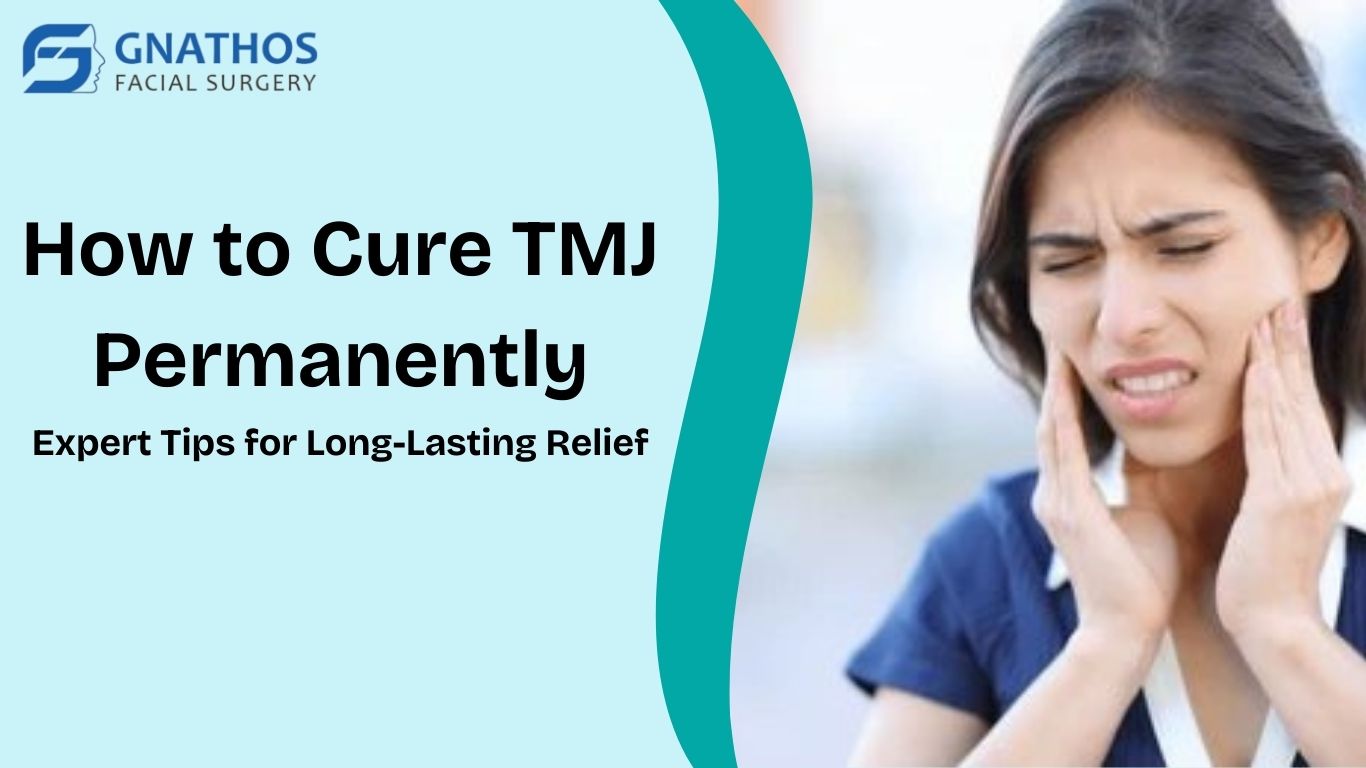How to Cure TMJ Permanently: If you’ve been experiencing jaw pain, headaches, difficulty chewing, or a clicking sound in your jaw, you may have heard of a condition called TMJ (temporomandibular joint) disorder. It’s a frustrating condition that affects the joint connecting your jawbone to your skull, causing pain and discomfort. But if you’re asking, how to cure TMJ permanently, you’re not alone! Many people struggle with finding lasting relief from the discomfort of TMJ.
While it’s not always possible to cure TMJ overnight, some several proven strategies and treatments can offer long-term relief. By understanding the underlying causes of TMJ and adopting a comprehensive treatment plan, it’s possible to manage and even permanently alleviate the symptoms.
What is TMJ?
The temporomandibular joint (TMJ) is the joint that connects your jawbone (mandible) to the skull (temporal bone). It is one of the most frequently used joints in your body, responsible for allowing you to open and close your mouth, chew, talk, and even yawn. Because it’s involved in so many daily activities, any dysfunction in the TMJ can cause pain, discomfort, and even significant difficulty in daily functions.
TMJ disorder (TMD) refers to a group of conditions affecting the TMJ. Symptoms of TMJ can vary widely but often include:
- Jaw pain or tenderness
- Pain in or around the ear
- Difficulty chewing or a “stuck” jaw
- Jaw clicking or popping sounds
- Headaches, neck, or shoulder pain
- Teeth grinding (bruxism)
The exact cause of TMJ is not always clear. It can result from trauma, teeth grinding, jaw misalignment, stress, arthritis, or muscle tension. Regardless of the cause, TMJ can be a debilitating condition that impacts your quality of life. But the good news is that there are ways to find relief, and with the right approach, you can cure TMJ permanently or at least manage it effectively.
How to Cure TMJ Permanently: Expert Tips for Long-Lasting Relief
Finding lasting relief from TMJ requires a comprehensive, multi-faceted approach. Here are some expert tips and proven strategies that can help:
1. Practice Stress Management Techniques
Stress is a major contributor to TMJ disorder, as it often leads to teeth grinding or jaw clenching, especially during sleep. Bruxism (grinding your teeth) puts excessive pressure on the temporomandibular joint, which can cause inflammation and pain.
How to manage stress:

- Mindfulness Meditation: Practicing mindfulness or guided meditation can help you relax and reduce overall stress.
- Breathing Exercises: Deep breathing techniques can help you calm your body and mind, especially if you tend to clench your jaw when you’re anxious.
- Yoga: Yoga and other relaxation exercises help reduce muscle tension and stress, which can alleviate TMJ symptoms.
- Regular Breaks: Taking short breaks throughout the day to relax can help lower stress levels and reduce jaw tension.
By managing your stress effectively, you can reduce the frequency and intensity of jaw clenching and teeth grinding, promoting long-term TMJ relief.
2. Correct Posture
Poor posture, particularly in the neck and upper back, can affect the muscles around the TMJ, leading to jaw pain and discomfort. If you sit at a desk all day or slouch often, it can create additional strain on the jaw muscles, worsening TMJ symptoms.
How to improve posture:
- Ergonomic Work Setup: Ensure your desk and computer setup are ergonomic, meaning your monitor is at eye level, and your chair supports your lower back. Avoid slouching, and make sure your shoulders are relaxed.
- Posture-Correcting Exercises: Strengthening exercises for your neck and shoulders can help improve your posture and reduce jaw pain. Work with a physical therapist or a chiropractor to learn proper alignment.
- Avoid Forward Head Positioning: If you tend to jut your head forward while working on a computer or phone, this can strain the muscles around your TMJ. Keep your head aligned with your spine to reduce unnecessary tension.
3. Use Hot and Cold Therapy
One of the simplest ways to relieve TMJ pain is by using hot and cold therapy. Both hot and cold treatments can help reduce inflammation and ease muscle tension, providing relief from the discomfort caused by TMJ.
How to apply hot and cold therapy:
- Cold Therapy: Apply an ice pack wrapped in a towel to the side of your face where you feel the most pain. Ice can help reduce swelling and numb the area.
- Heat Therapy: A warm compress or heating pad can help relax the muscles around your jaw, reducing stiffness and pain. Apply the heat for 10–15 minutes at a time, especially before doing jaw exercises.
You can alternate between hot and cold therapy, depending on your preference and the intensity of your symptoms.
4. Jaw Exercises and Stretching

One of the best ways to cure TMJ permanently is through regular jaw exercises. These exercises can help strengthen the muscles around your jaw, improve mobility, and alleviate tension.
Recommended jaw exercises:
- Relaxed Jaw Exercise: Sit with your lips together and teeth slightly apart. Gently move your jaw forward and backward for a few minutes. This helps relieve muscle tension in the jaw and neck.
- Jaw Stretch: Open your mouth slowly and gently, holding the stretch for about 5 seconds, then close your mouth. Repeat this 5–10 times.
- Side-to-Side Movement: Place your thumb on your chin and gently move your jaw left and right, holding each position for a few seconds. This helps improve the mobility of the jaw and relieve discomfort.
You can work with a physical therapist or dentist to learn the best exercises for your specific TMJ condition.
5. Wear a Night Guard or Splint
If you suffer from teeth grinding or jaw clenching, especially at night, wearing a night guard or splint can help reduce the pressure on your TMJ. These devices help cushion the jaw, preventing damage to the teeth and reducing strain on the joint.
- Night Guards: These are custom-made devices that fit over your teeth and provide a barrier to protect them from grinding.
- Splints: A splint can also help reposition your jaw slightly to reduce pressure on the TMJ.
Talk to your dentist about getting a custom-fit night guard or splint if you suspect that teeth grinding or jaw clenching is contributing to your TMJ symptoms.
6. Massage Therapy
Gentle massage therapy can work wonders for TMJ relief. Massaging the muscles around your jaw and face can help reduce muscle tightness, improve blood circulation, and alleviate pain. Some people find it helpful to massage their temples, the area just in front of their ears, and the muscles in their neck and shoulders.
You can either work with a licensed massage therapist or try self-massage techniques at home. Use your fingers to apply gentle pressure and circular motions on the affected areas to relieve tension.
7. Physical Therapy
Physical therapy is one of the most effective ways to manage and cure TMJ permanently. A physical therapist can guide you through exercises that target the muscles and joints around your jaw, neck, and shoulders, helping to restore proper movement and relieve pain.
A physical therapist may also use techniques like manual therapy to adjust your jaw position or ultrasound therapy to reduce inflammation. They can also educate you on posture correction and stress management to help prevent future TMJ issues.
8. Anti-Inflammatory Medications
Over-the-counter NSAIDs (nonsteroidal anti-inflammatory drugs) like ibuprofen or naproxen can help manage pain and inflammation associated with TMJ. However, it’s important not to rely on pain medication for long-term relief. These drugs can provide temporary comfort, but they don’t address the root cause of TMJ.
If your pain persists, talk to your doctor about other treatment options, such as prescription medications or muscle relaxants, to alleviate more severe symptoms.
9. Acupuncture and Alternative Therapies
Some people find acupuncture helpful for TMJ relief. Acupuncture is an alternative therapy that involves inserting thin needles into specific points on the body to reduce pain and promote healing. Although research on its effectiveness for TMJ is still ongoing, many individuals report significant relief from muscle tension and jaw pain after acupuncture treatments.
Other alternative therapies, such as chiropractic care or biofeedback, may also provide benefits in managing TMJ symptoms. It’s important to consult with a healthcare professional to determine which alternative treatments might work best for you.
When to See a Doctor for TMJ
While many cases of TMJ can be managed at home, there are times when you should seek medical attention:
- If your pain is severe or does not improve with home remedies.
- If you experience locking of the jaw, making it difficult to open or close your mouth.
- If you have chronic headaches or neck pain associated with TMJ.
- If your jaw or teeth are misaligned due to TMJ.
A healthcare provider, such as a dentist or physical therapist, can help assess your condition and recommend more advanced treatments if necessary.
FAQs
Can TMJ be cured permanently?
Yes, with the right combination of treatments, lifestyle changes, and stress management, TMJ can be permanently relieved or effectively managed. It requires a comprehensive approach to address the root causes and symptoms.
What causes TMJ?
TMJ can be caused by several factors, including stress, teeth grinding, jaw injury, arthritis, and poor posture. Sometimes, a combination of factors contributes to the development of TMJ.
How long does it take to recover from TMJ?
Recovery time varies based on the severity of the condition and the treatment approach. With consistent care, many people experience significant improvement in a few weeks to several months.
Can a night guard help with TMJ?
Yes, a night guard can help alleviate the pain caused by teeth grinding and jaw clenching, both of which are common in TMJ disorder.
Is physical therapy effective for TMJ?
Yes, physical therapy is highly effective for TMJ. It can help strengthen jaw muscles, improve mobility, and reduce pain. A physical therapist can guide you through exercises that address your specific TMJ needs.
Conclusion
If you’re wondering how to cure TMJ permanently, the good news is that relief is possible! By implementing a comprehensive approach that includes stress management, physical therapy, posture correction, and lifestyle changes, you can manage and potentially eliminate TMJ pain for the long term.
If you’re dealing with TMJ or any other jaw-related concerns, Gnathos Face is here to help. Our experienced team of specialists can assess your condition, offer personalized treatment plans, and help you achieve lasting relief. Visit Gnathos Face to learn more or to schedule a consultation today!












